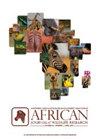Ten Years on: Have Large Carnivore Reintroductions to the Eastern Cape Province, South Africa, Worked?
IF 1
4区 环境科学与生态学
Q2 Agricultural and Biological Sciences
引用次数: 5
Abstract
Large (>15 kg) carnivores, namely lions (Panthera leo), leopards (Panthera pardus), cheetahs (Acinonyx jubatus), African wild dogs (Lycaon pictus), spotted (Crocuta crocuta) and brown hyaenas (Parahyaena brunnea), have been reintroduced to 16 private- and state-owned reserves in the Eastern Cape Province, South Africa. Objectives behind these reintroductions ranged from ecotourism, ecological restoration, to species conservation. We reassessed the reintroductions' objectives and updated their outcomes a decade after the initial assessment. Ecotourism and ecological restoration were the most common objectives for the reintroduction of top predators to these reserves. With one exception, these reintroductions were successful in meeting their specific objectives, as only African wild dogs have failed to re-establish in the province. Assessments for leopards and brown hyaenas were inconclusive due to a lack of monitoring data. Causes of objective- and species-specific failures in some reserves included founding same-sex populations, lack of breeding events and changes in reserve management objectives. Long-term monitoring is essential in managing and assessing the success of conservation actions, including reintroductions of threatened species. Our review demonstrates this by highlighting changed outcomes for populations and identifying new challenges that have arisen in the landscape. In the modern parlance of conservation marketing, the multi-species reintroductions that occurred within the Eastern Cape represent successful rewilding within the province.十年过去了:大型食肉动物重新引入南非东开普省成功了吗?
大型(>15公斤)食肉动物,即狮子(Panthera leo)、豹子(Panthera pardus)、猎豹(Acinonyx jubatus)、非洲野狗(Lycaon pictus)、斑点(Crocuta Crocuta)和棕色鬣蜥(Parahyaena brunea),已被重新引入南非东开普省的16个私人和国有保护区。这些重新引入的目标包括生态旅游、生态恢复和物种保护。我们重新评估了重新引入的目标,并在初步评估十年后更新了结果。生态旅游和生态恢复是将顶级捕食者重新引入这些保护区的最常见目标。除了一个例外,这些重新引入成功地实现了其特定目标,因为只有非洲野狗未能在该省重新建立。由于缺乏监测数据,对豹子和棕色鬣蜥的评估没有结论。一些保护区目标和物种特定失败的原因包括建立同性种群、缺乏繁殖活动以及保护区管理目标的变化。长期监测对于管理和评估保护行动的成功至关重要,包括重新引入受威胁物种。我们的审查通过强调人口变化的结果和确定景观中出现的新挑战来证明这一点。用保护营销的现代说法来说,东开普省境内发生的多物种重新引入代表着该省的成功重建。
本文章由计算机程序翻译,如有差异,请以英文原文为准。
求助全文
约1分钟内获得全文
求助全文
来源期刊

African Journal of Wildlife Research
Multiple-
自引率
0.00%
发文量
14
期刊介绍:
The African Journal of Wildlife Research is an ISI ranked, leading peer reviewed scientific publication in wildlife research in Africa, Arabia and Madagascar, with a broad base covering scientific, applied, managerial, methodological and sociological issues related to wildlife research. The journal publishes original full-length scientific papers, short communications, book reviews as well as reviews on science-based research invited by the editor-in-chief. This research journal and has been published annually since 1971.
Until 2014 (Volume 44) the journal was known as the South African Journal of Wildlife Research and from 2015 (volume 45) the name changed to African Journal of Wildlife Research. The journal reaches a wide readership, including both local and foreign wildlife managers, academics and wildlife owners, and libraries local and abroad. It is an important reference for anyone interested in the management and sustainable utilisation of natural resources.
 求助内容:
求助内容: 应助结果提醒方式:
应助结果提醒方式:


